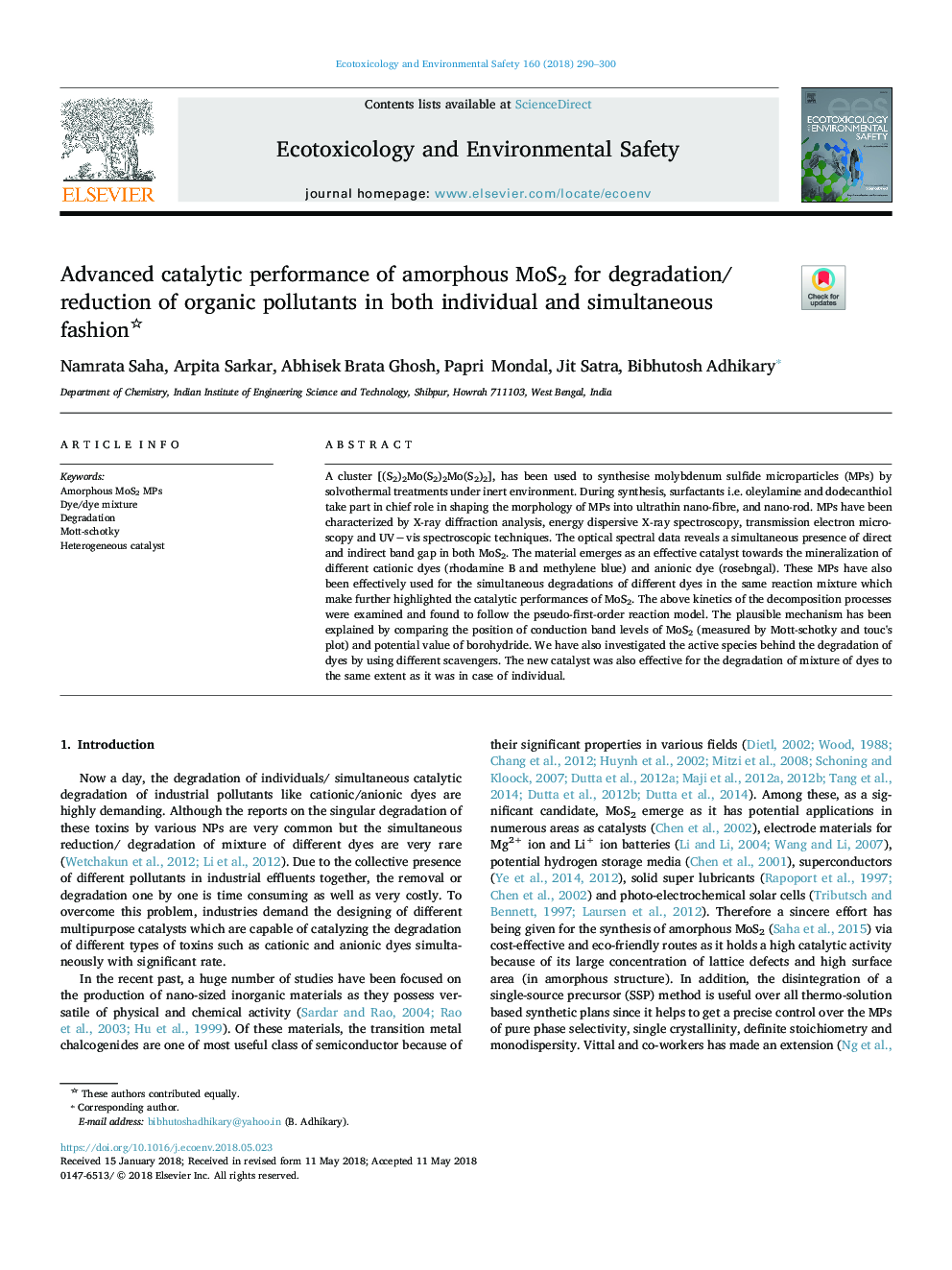| Article ID | Journal | Published Year | Pages | File Type |
|---|---|---|---|---|
| 8853553 | Ecotoxicology and Environmental Safety | 2018 | 11 Pages |
Abstract
A cluster [(S2)2Mo(S2)2Mo(S2)2], has been used to synthesise molybdenum sulfide microparticles (MPs) by solvothermal treatments under inert environment. During synthesis, surfactants i.e. oleylamine and dodecanthiol take part in chief role in shaping the morphology of MPs into ultrathin nano-fibre, and nano-rod. MPs have been characterized by X-ray diffraction analysis, energy dispersive X-ray spectroscopy, transmission electron microscopy and UVâvis spectroscopic techniques. The optical spectral data reveals a simultaneous presence of direct and indirect band gap in both MoS2. The material emerges as an effective catalyst towards the mineralization of different cationic dyes (rhodamine B and methylene blue) and anionic dye (rosebngal). These MPs have also been effectively used for the simultaneous degradations of different dyes in the same reaction mixture which make further highlighted the catalytic performances of MoS2. The above kinetics of the decomposition processes were examined and found to follow the pseudo-first-order reaction model. The plausible mechanism has been explained by comparing the position of conduction band levels of MoS2 (measured by Mott-schotky and touc's plot) and potential value of borohydride. We have also investigated the active species behind the degradation of dyes by using different scavengers. The new catalyst was also effective for the degradation of mixture of dyes to the same extent as it was in case of individual.
Keywords
Related Topics
Life Sciences
Environmental Science
Environmental Chemistry
Authors
Namrata Saha, Arpita Sarkar, Abhisek Brata Ghosh, Papri Mondal, Jit Satra, Bibhutosh Adhikary,
